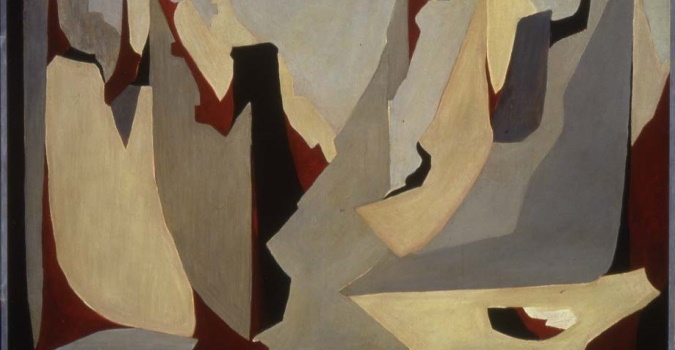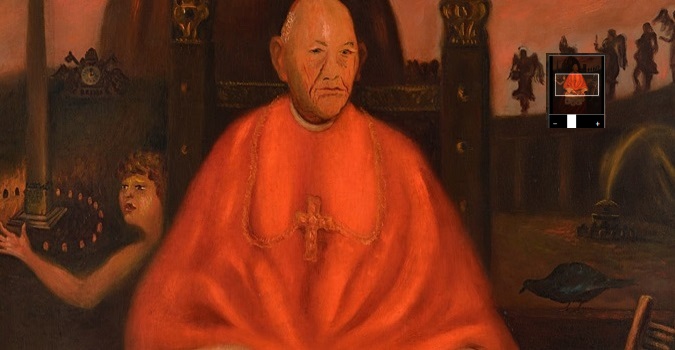Artwork of the month - April 2022
April 2022
Giulio Turcato
(Mantova, 1912 - Roma, 1995)
Rovine di Varsavia, 1948
Oil painting on canvas, 90 x 115 cm
inv. AM 5007

The painting Rovine di Varsavia is one of the most representative pieces from a series with the same name created by Giulio Turcato between 1948 and 1952, following a journey as a member of the Italian Mission for the Peace Congress to Breslavia, Cracovia, Auschwitz, Lodz and Varsavia. This last city has become a symbol of the destruction and absolute madness of National Socialism throughout the artist's graphic and painting recordings.
The very few colours used are deeply striking: the black and a combination of greys recall the city devastated by German bombing, where the ruins of the destroyed buildings stand out against the dark red of the burning ruins. A silent image of destruction and death, the ruins are composed in a solemn and dramatic way, showing us the artist's confusion and depression in the presence of this dark scene.
From a procedural point of view, the painting documents Turcato's progressive separation from the language of representation and his original abstract research, developed in the context of modern French painting, especially Cézanne, Matisse and Cubism, and in relation with the Italian artists such as Corpora, Fazzini, Guttuso, Monachesi, Consagra and Magnelli. In the context of the burning discussion that opposed neo-realists and formalists, Turcato's option for abstraction became clear when in 1946 he became a member of the Fronte Nuovo delle Arti and of the Forma 1 group (1947) and was expressed in the extensive production of those years: landscapes and other compositions, but above all cycles inspired by a true political commitment (demonstrations, revolts, war ruins, work).
In the Rovine di Varsavia the painting spreads out in large two dimensional areas, and the composition is structured in meditated frames of silhouettes and in a rude and solid colour. In the abstract, the story of the tragedy is not avoided but, instead, expanded and exposed in all its shaming and naked evidence, a universal and timeless warning against the horrors of war.
Return to the section > The Galleria d'Arte Moderna artwork of the month







































